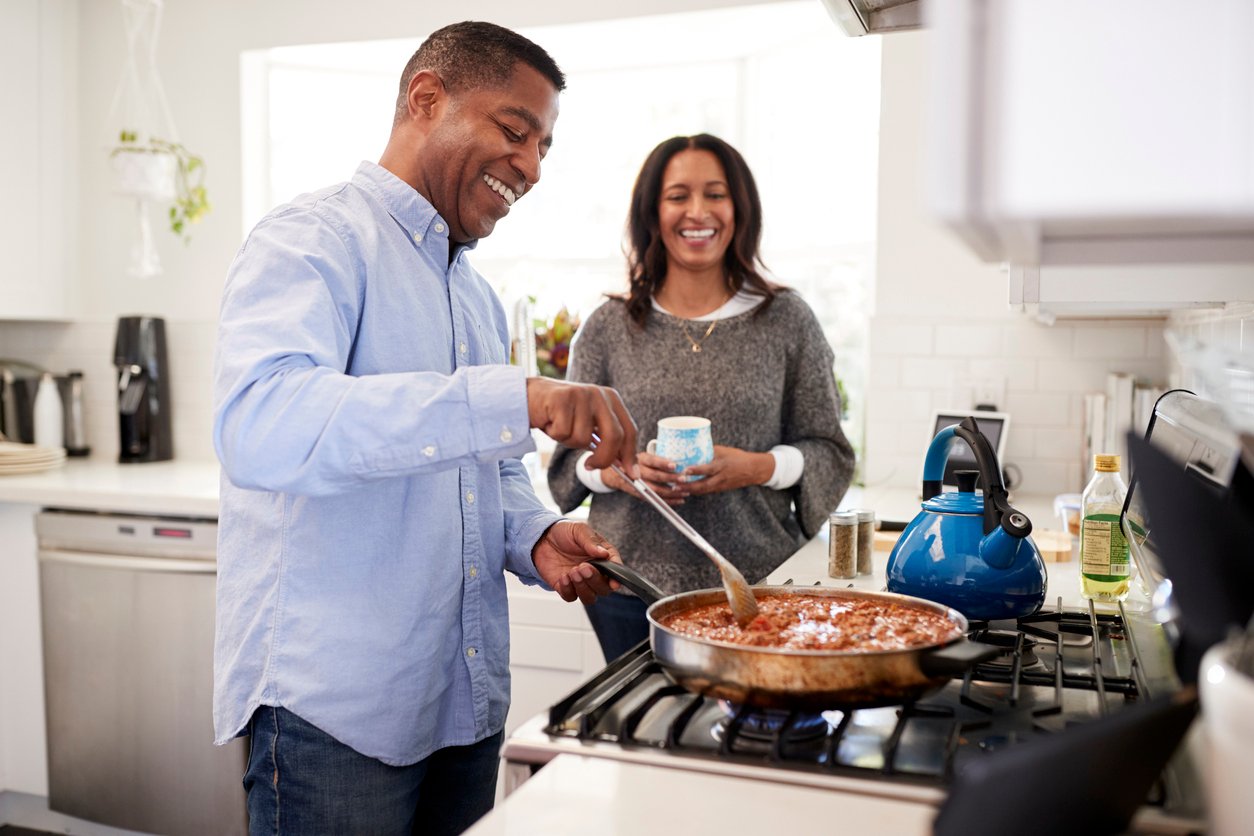Tips for preventing burn injuries in the kitchen
Cultivating better habits throughout the house is important, but it's especially key in the kitchen, where the majority of burn injuries occur. The American Burn Association notes that 47% of all home fires are caused by cooking.
.png?width=350&height=350&name=LIZ_posts%20wrapped%20in%20blog%20(3).png) Cultivating better habits throughout the house is important. It's especially key in the kitchen, where most burn injuries occur. The American Burn Association notes that 47% of all home fires are caused by cooking. In recognition of National Burn Awareness Week (February 4–10) continue reading for tips on how to prevent burn injuries in the kitchen.
Cultivating better habits throughout the house is important. It's especially key in the kitchen, where most burn injuries occur. The American Burn Association notes that 47% of all home fires are caused by cooking. In recognition of National Burn Awareness Week (February 4–10) continue reading for tips on how to prevent burn injuries in the kitchen.
Burns can come from fires, a hot stovetop, hot liquids, and steam. Boiling water or other liquids can easily cause third-degree burns, too. These burns damage all skin layers and fatty tissue, increasing the risk of infection.
The good news is that putting more prevention strategies in place in the kitchen can help reduce the chances of burn injuries of every kind. Here are a few burn-safety tips to get you started:
Tips to consider when dealing with pots and pans:
- Turn pot handles away from the stove's edge.
- Always use potholders or oven mitts when handling pots and pans during cooking. Get in the habit of having these ready before you start.
- Roll up sleeves when cooking or wear short-sleeved shirts to prevent loose sleeves from catching fire.
- Minimize how many hot pots or dishes you're holding at one time. Trying to balance multiple objects can increase the risk of accidents.
- When taking the lid off a pot, pan, or baking dish, lean back so the steam doesn't come up directly into your face.
- When frying food in oil, use a pan lid or splash guard. This prevents splatter that could catch fire or cause burns on your skin.
Tips to avoid multitasking while cooking:
- Don't hold a child or a pet while drinking hot liquids. Their unexpected movement might cause an accidental spill.
- Create a three-foot "safe zone" around the oven and stove. This prevents children from getting too close or pulling pans down from the stovetop.
Tips to use throughout the kitchen:
- When opening foods that have been in the microwave, pull the lid or open away from your body. Even with bowls or foods that feel lukewarm outside, the interior can be hot enough to cause burns. Also, allow food to rest for at least a minute after removing the lid so it cools down safely.
- Use microwave-safe cookware, which is designed to let steam escape during cooking instead of building up.
- Use a tight-fitting lid over travel mugs to prevent a burn in case the cup falls over.
- Unless you're using a cooking device like a crockpot or slow cooker that has safety features for being left alone, always remain in the home when simmering, baking, roasting, or boiling food. Set a timer to remind yourself to check on what you're making.
Here are some tips to use before and after cooking:
- Don't cook when you're drowsy from medications or alcohol. This can delay reaction time and make you more distracted.
- Regularly clean the stove, oven, and exhaust fan to prevent grease buildup. Grease fires can spread quickly and be difficult to extinguish.
- After cooking and before eating, check to make sure all the burners and the oven are turned off.
How to respond to a kitchen fire
If food does catch fire, cover a pan with a lid or cookie sheet. Never move the pan, advises the American Burn Association. Trying to relocate a pan during a fire can cause the contents to splash and increase your burn risk. If the fire is in the oven or microwave, keep the door shut and turn it off. The lack of oxygen inside will cause the flames to extinguish on their own. Of course, if the fire feels out of control, call 911 immediately and get out of the kitchen.
In general, being more aware of how burns can result from fire, hot objects, boiling liquids, steam, and chemicals can go a long way toward helping you see how risks might be heightened in your own kitchen. It’s also important to be prepared. Have a fire extinguisher in your home in case of emergency. Also make sure that your smoke alarm has working batteries. This is critical in detecting a fire early on.
For additional resources, learn more about the Burn Center at Massachusetts General Hospital. For more tips about creating a safer, healthier home, read our recent blog post on making home more comfortable for caregivers.
For more health and wellness education, follow @MGBHealthPlan on Instagram, LinkedIn, and Facebook.

-1.png?width=600&height=250&name=Copy%20Option%202%20(3)-1.png)